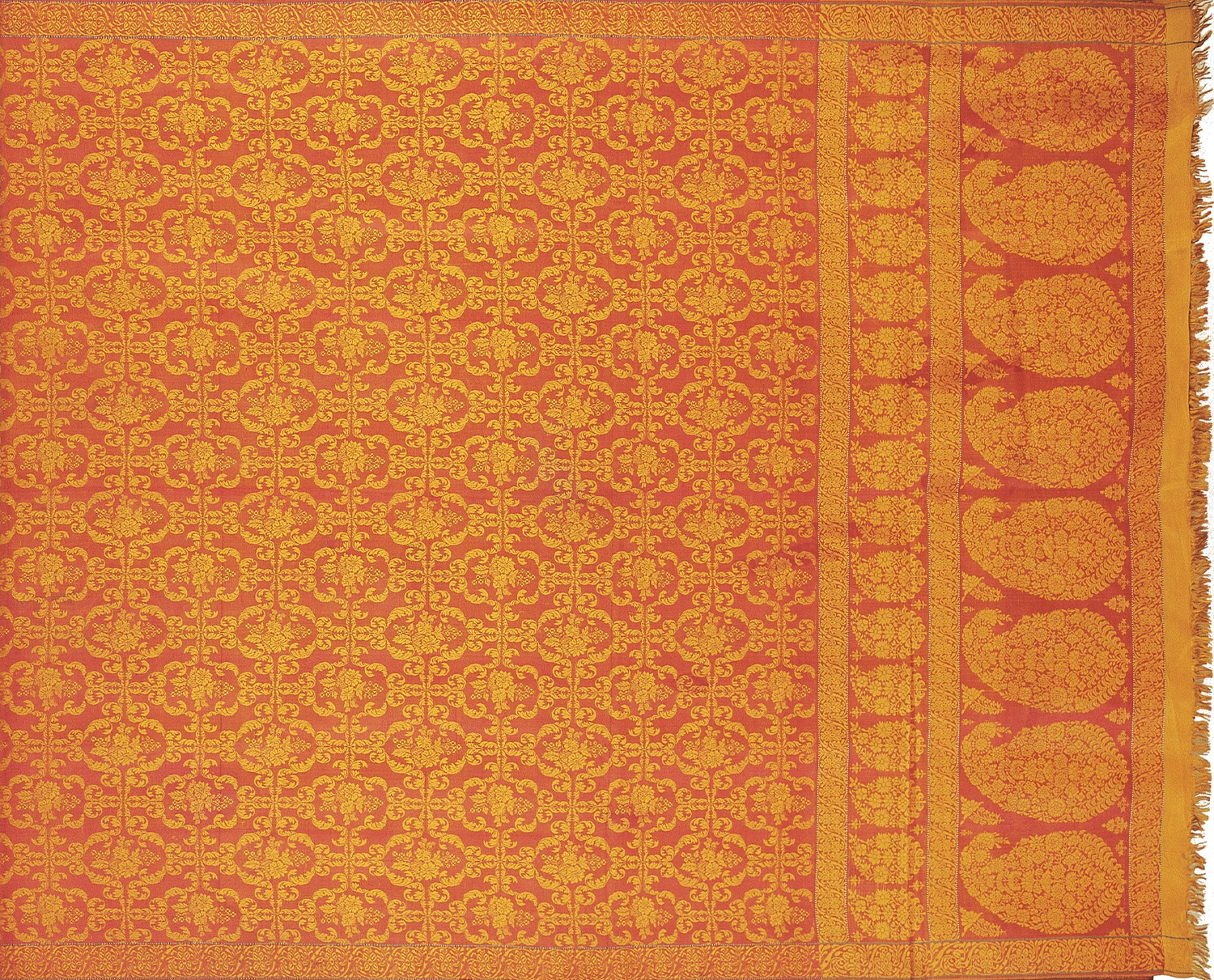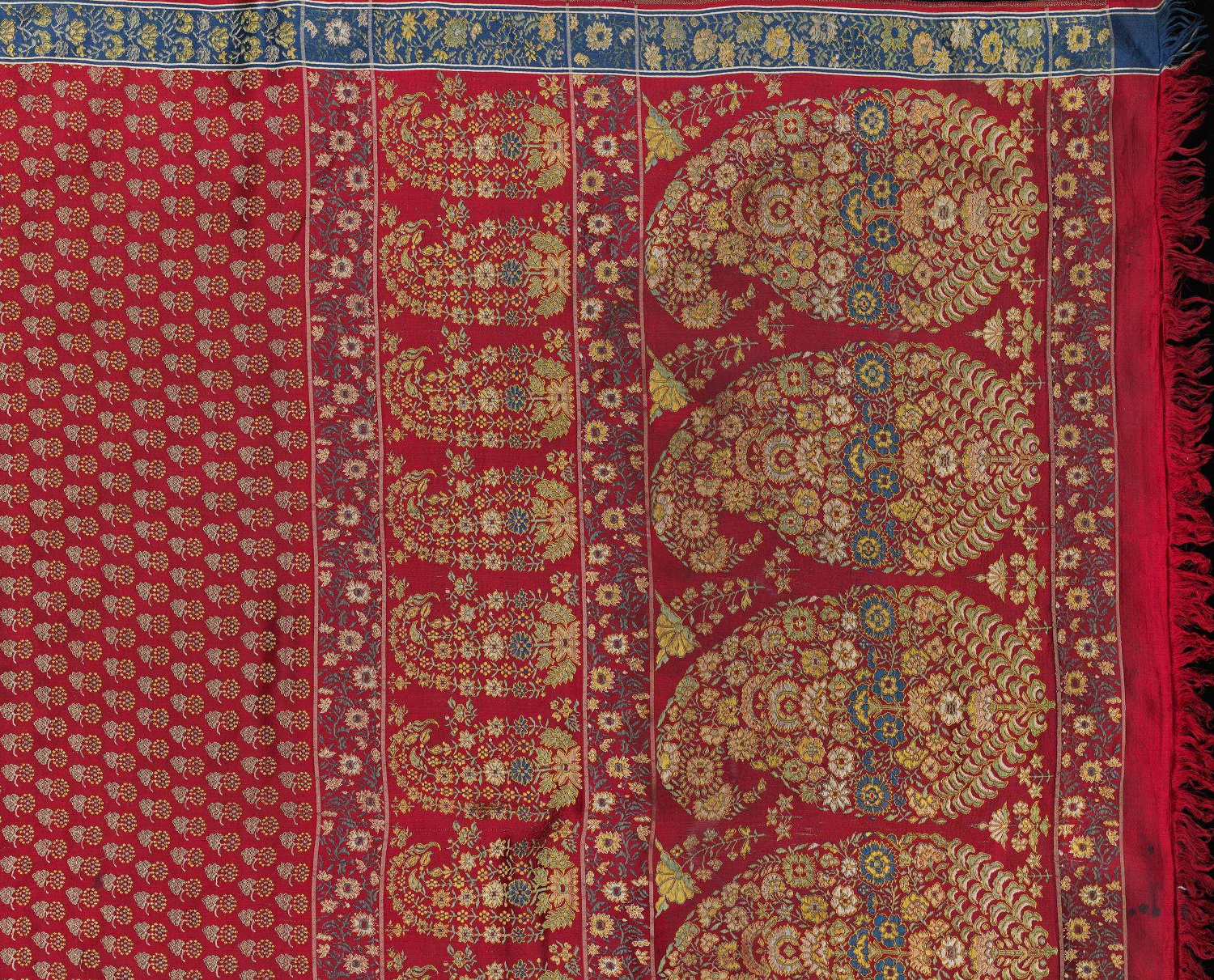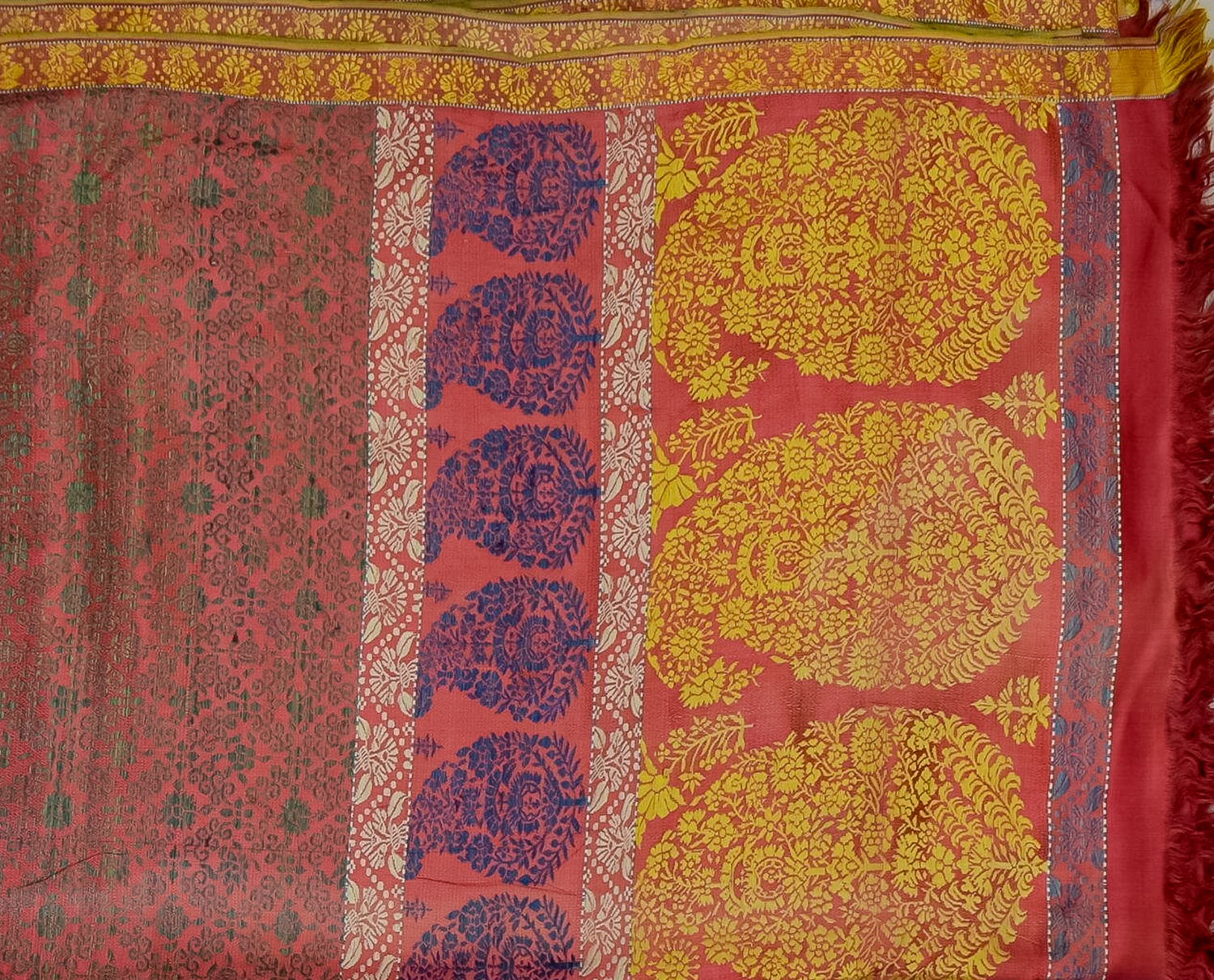ARTICLE
Tanchoi Weaving
A silk weaving technique that uses two to five weft threads for every one or two warp threads, Tanchoi is practiced in Gujarat and Varanasi (formerly Benaras) to make silk sarees prized for their lightness and brocade-like designs. The key difference between a typical brocade weave and Tanchoi is that the extra weft threads of Tanchoi are woven simultaneously with the primary weft and thus cannot be separated from the ground weave, giving the fabric a smooth texture.
Tanchoi weaves come in a variety of forms, and typically feature Chinese-influenced motifs of flowers, landscapes and birds. The basic Tanchoi is a satin weave with differently coloured weft threads that are used to create patterns that resemble embroidery, similar to Amru. This weave is often modified to include zari (gold or silver yarn) among the extra weft threads, although at least one of these threads remains silk. The Mushabbar design uses a woven net structure to create floral and tree-like patterns across the fabric, typically in shades of green. The Jamawar weave takes its influence from Kashmiri textiles and uses multiple colours in the weft. .
Many accounts exist of the origins of Tanchoi, but Chinese influence is widely acknowledged among scholars. One version of the origins of Tanchoi is that it was introduced to Surat in the 1850s by three weavers sent to China by Sir Jamsetjee Jejeebhoy to learn this technique. The name Tanchoi, according to the story, is a portmanteau of “tran,” the Gujarati word for three (possibly signifying the extra weft, or the three weavers who first brought it to India), and “Chhoi,” the Chinese master weaver from whom the brothers learnt it.
Colonial Bombay (now Mumbai) was the primary trade centre for Gujarati Tanchoi sarees until the 1940s, when weavers in Varanasi adopted the technique. The Varanasi variation includes the addition of zari as the extra weft thread, and a much more elaborate design made of floral patterns and large buta motifs. Varanasi's highly time-effective Jacquard looms and existing network of silk weavers meant that Tanchoi sarees could be produced and distributed with greater speed at a lower cost, making Varanasi Tanchoi the dominant version of the garment today. The Gujarati weave was simple in design, with the extra weft threads being gathered and tied together as tassels. This is now more common among Tanchoi scarves and shawls rather than sarees, which are typically made in the Varanasi style.
Today, Tanchoi sarees and other garments have a steady popularity among consumers, and are among the most prized silk textiles produced in Varanasi. They are widely sold in both online and offline retail stores.
Bibliography
Our website is currently undergoing maintenance and re-design, due to which we have had to take down some of our bibliographies. While these will be re-published shortly, you can request references for specific articles by writing to hellomapacademy@map-india.org.









